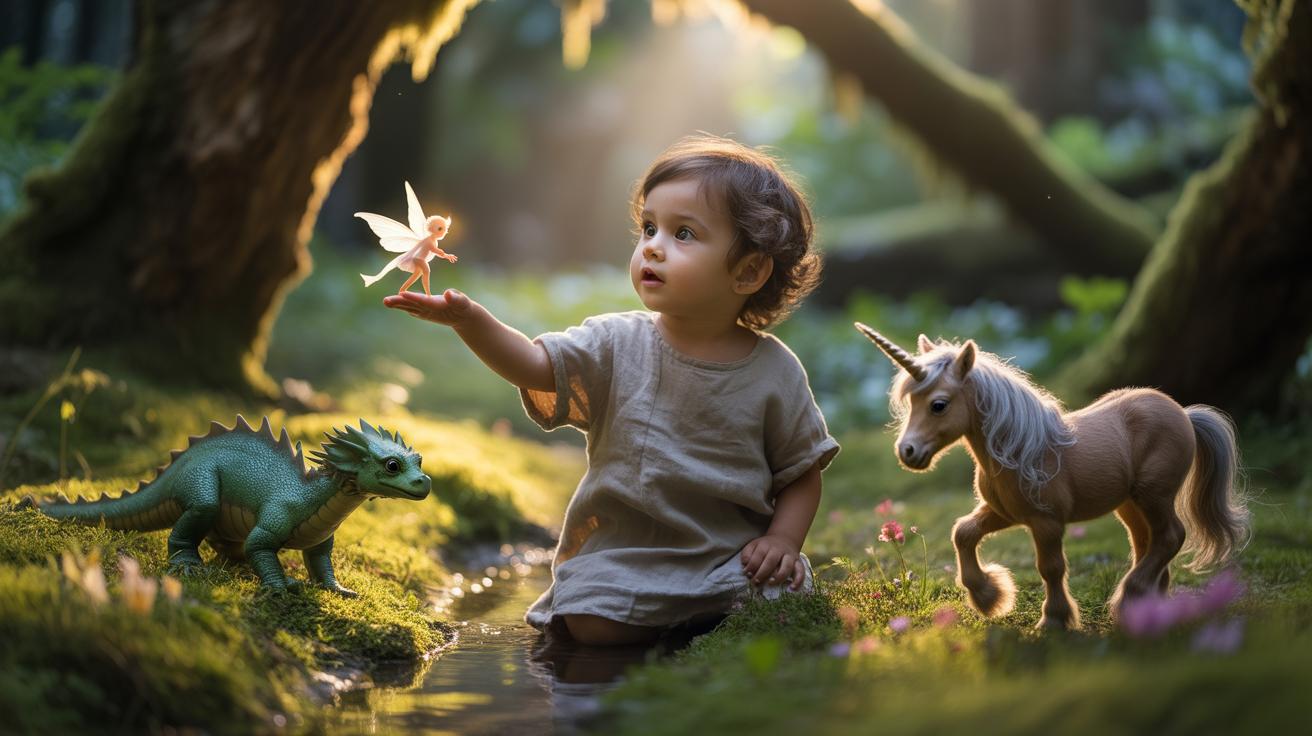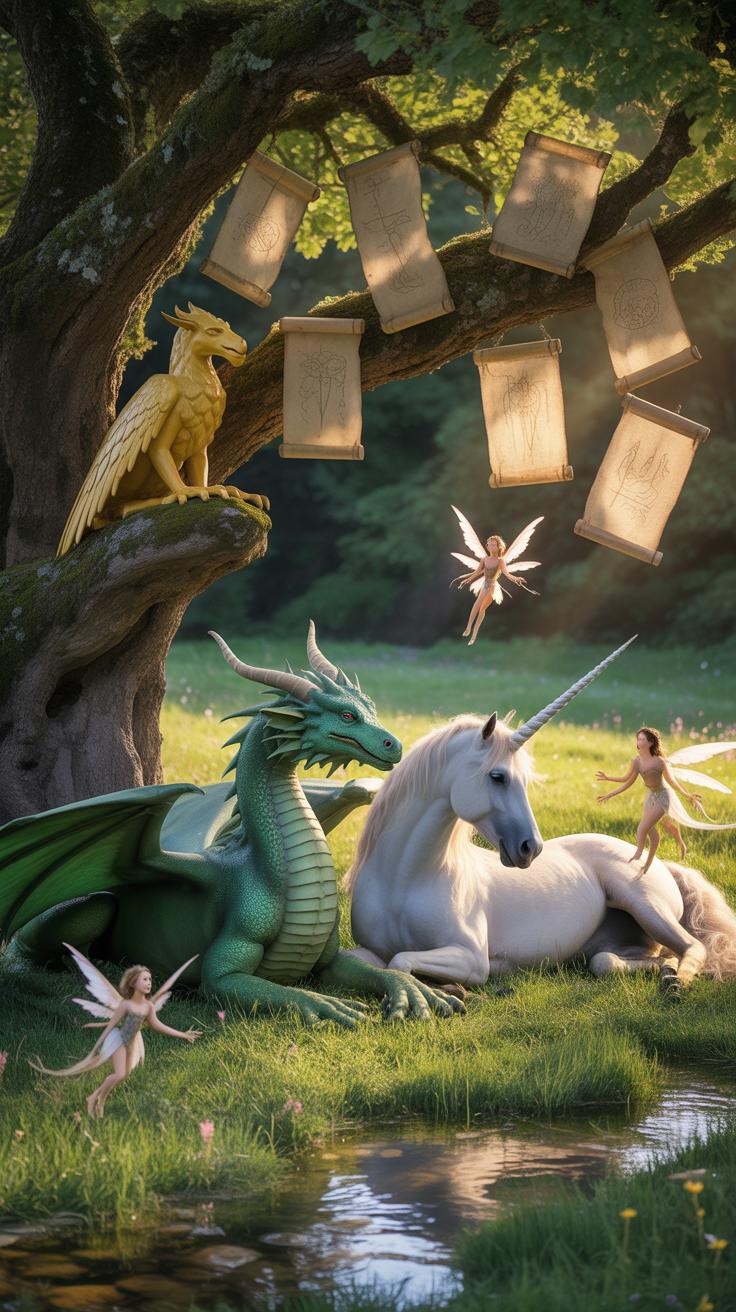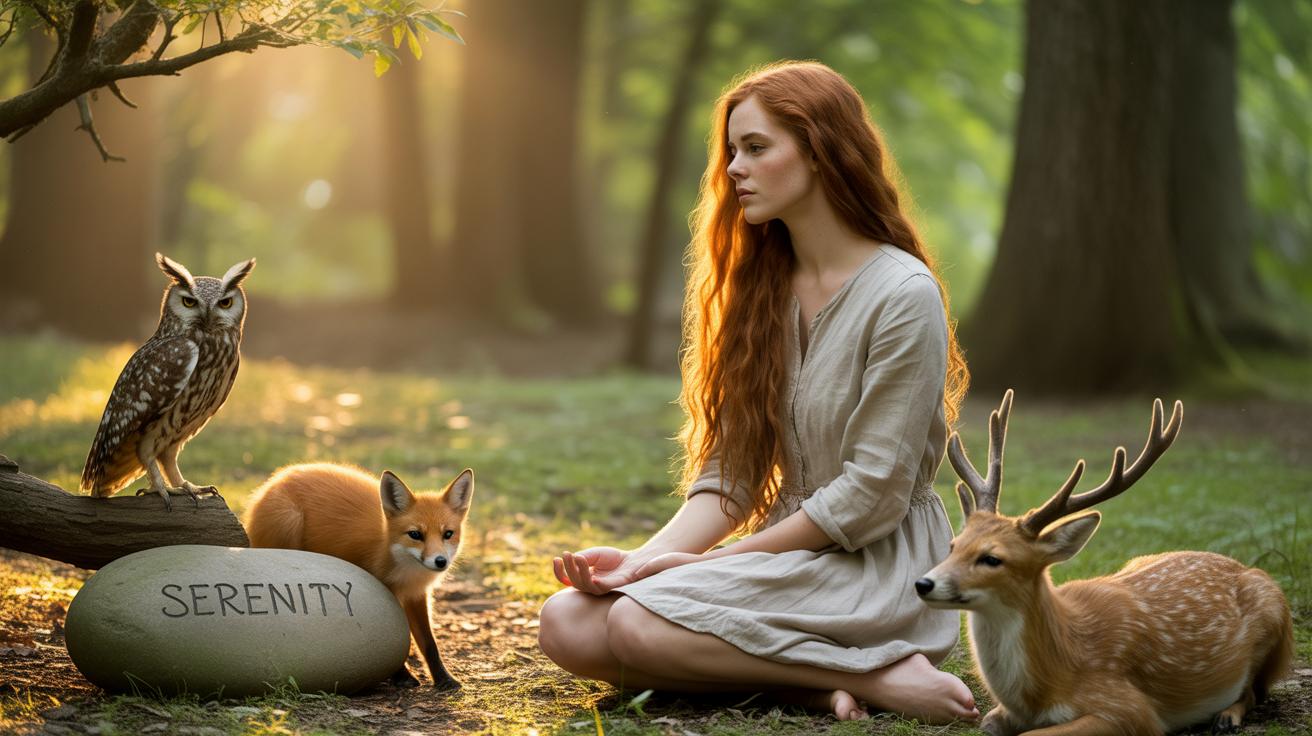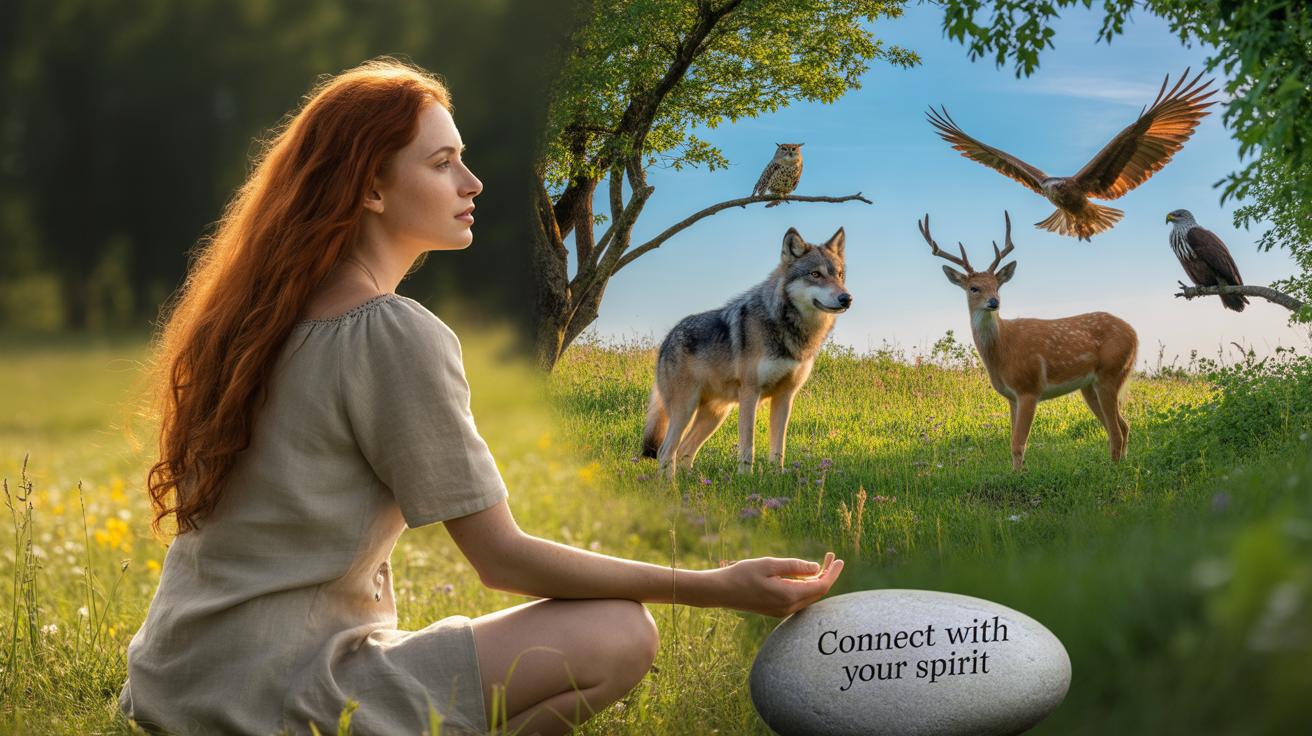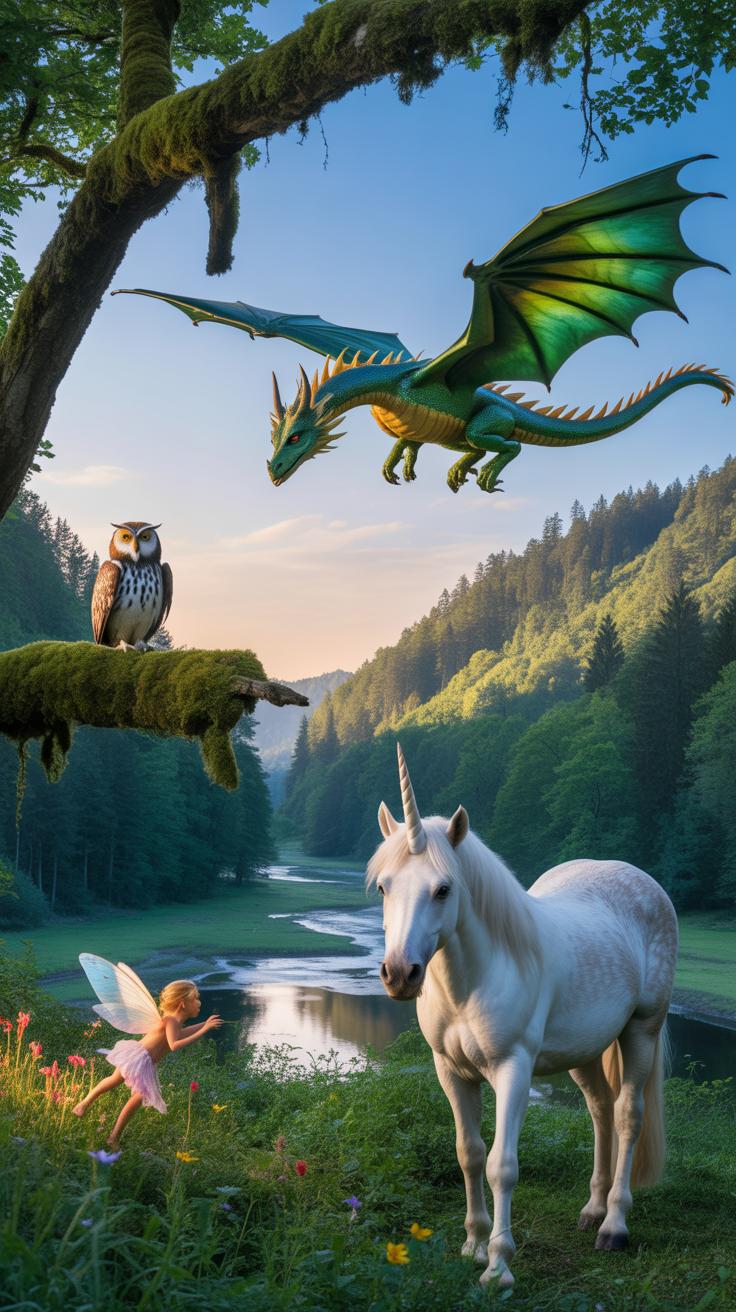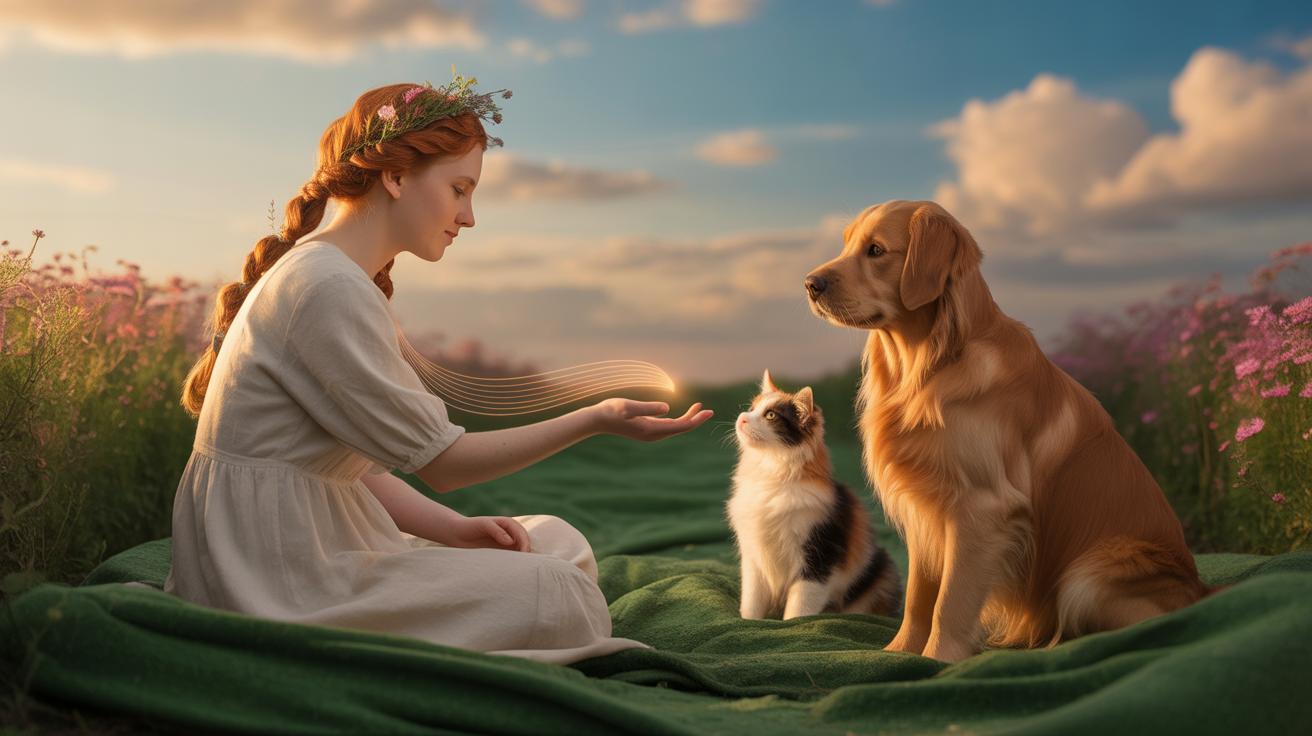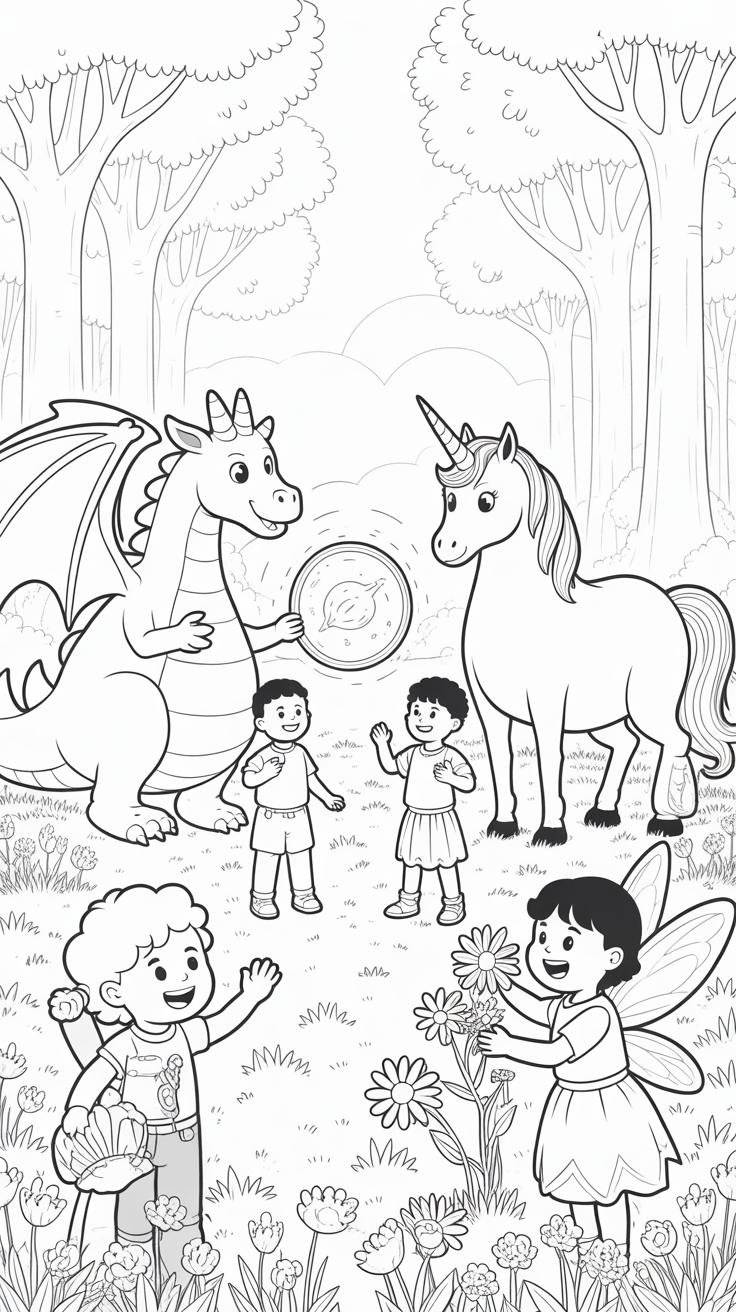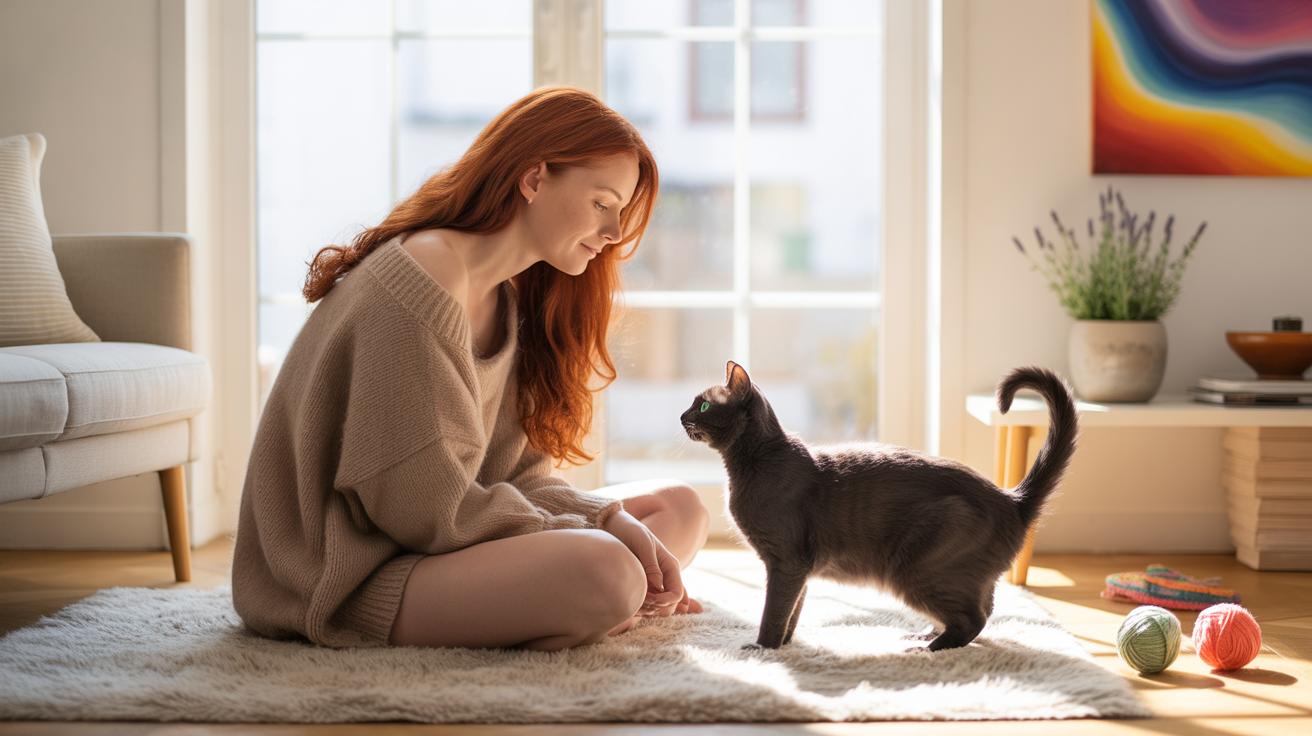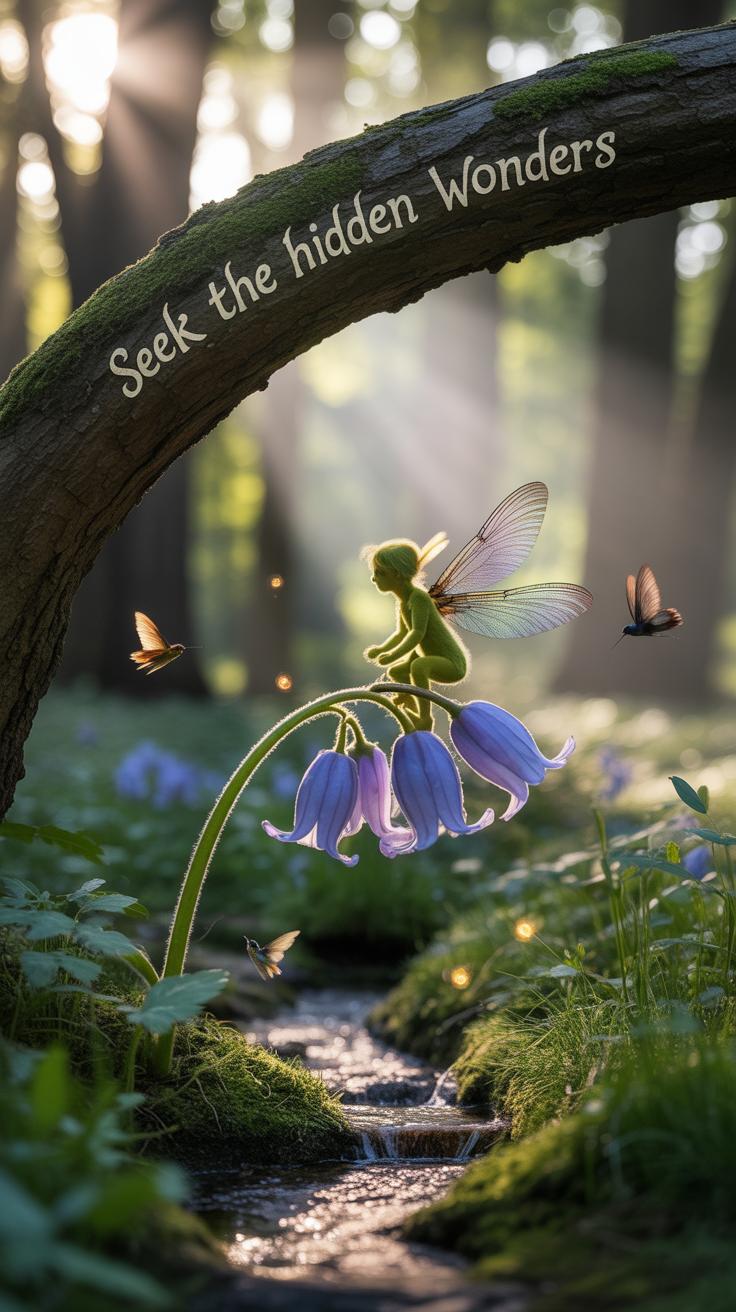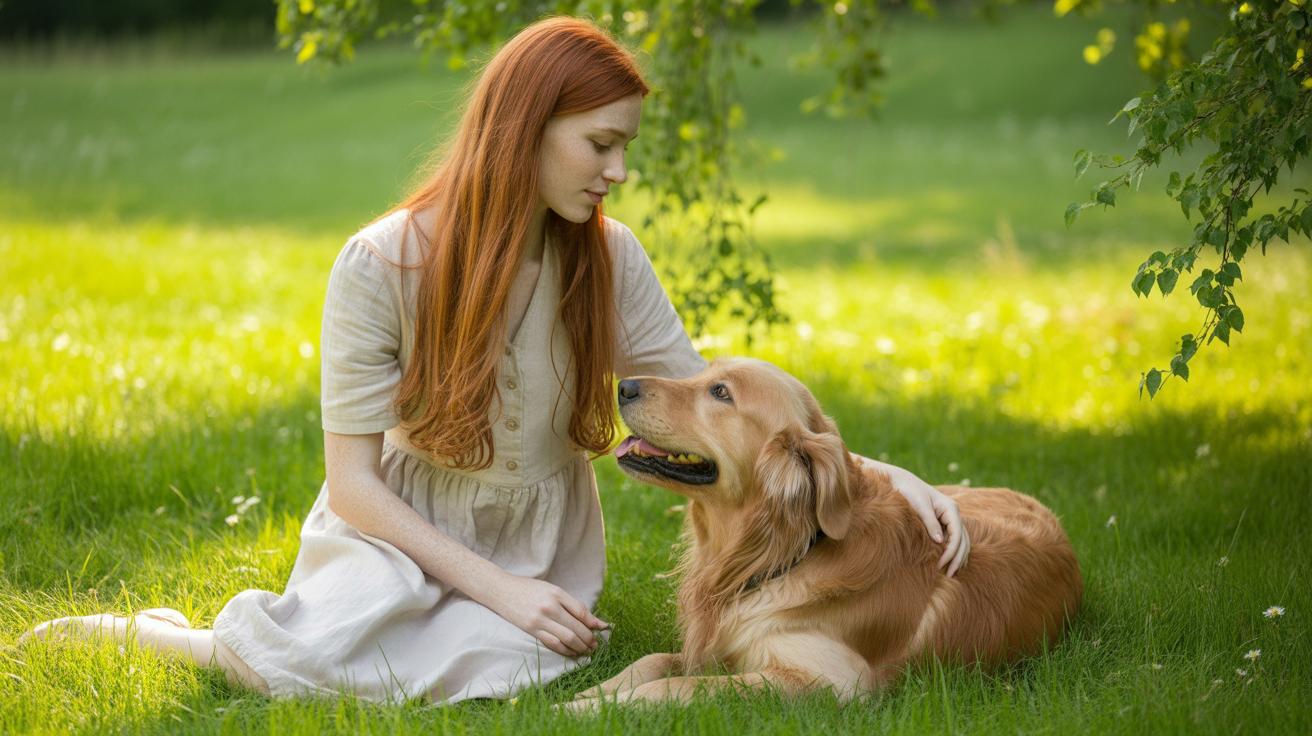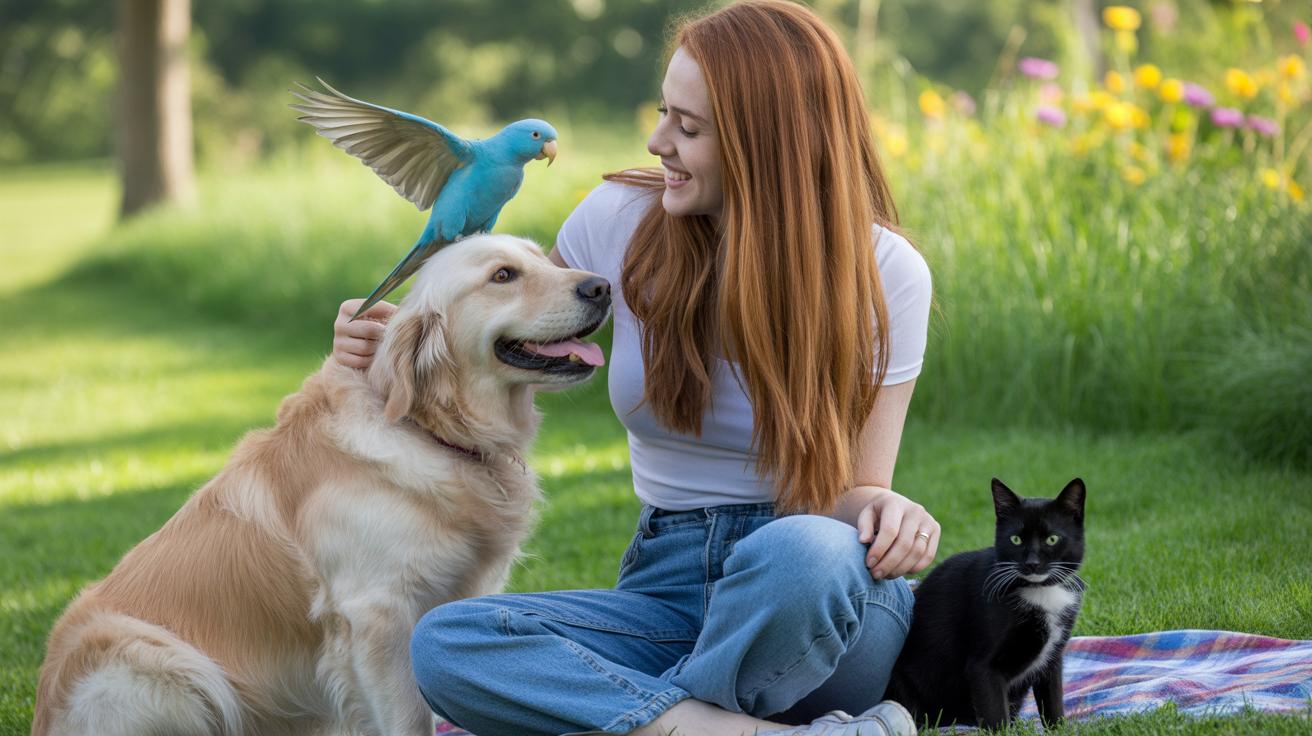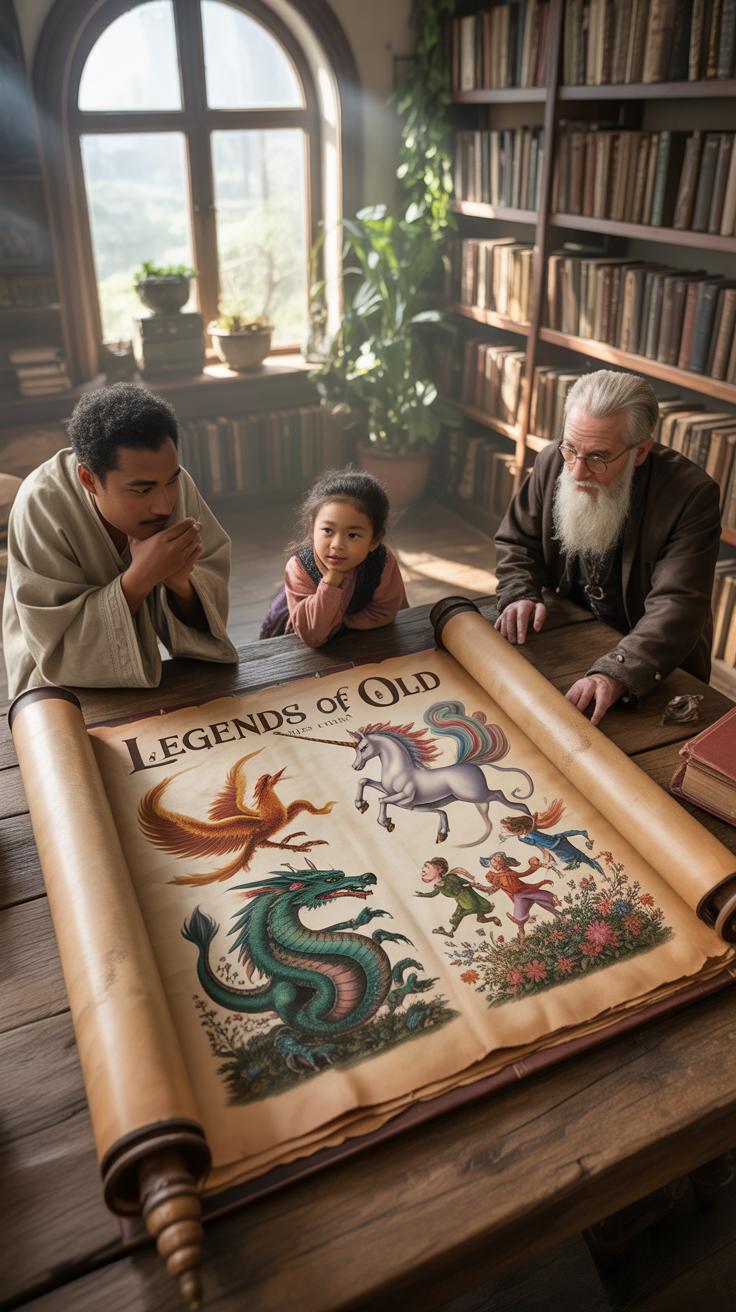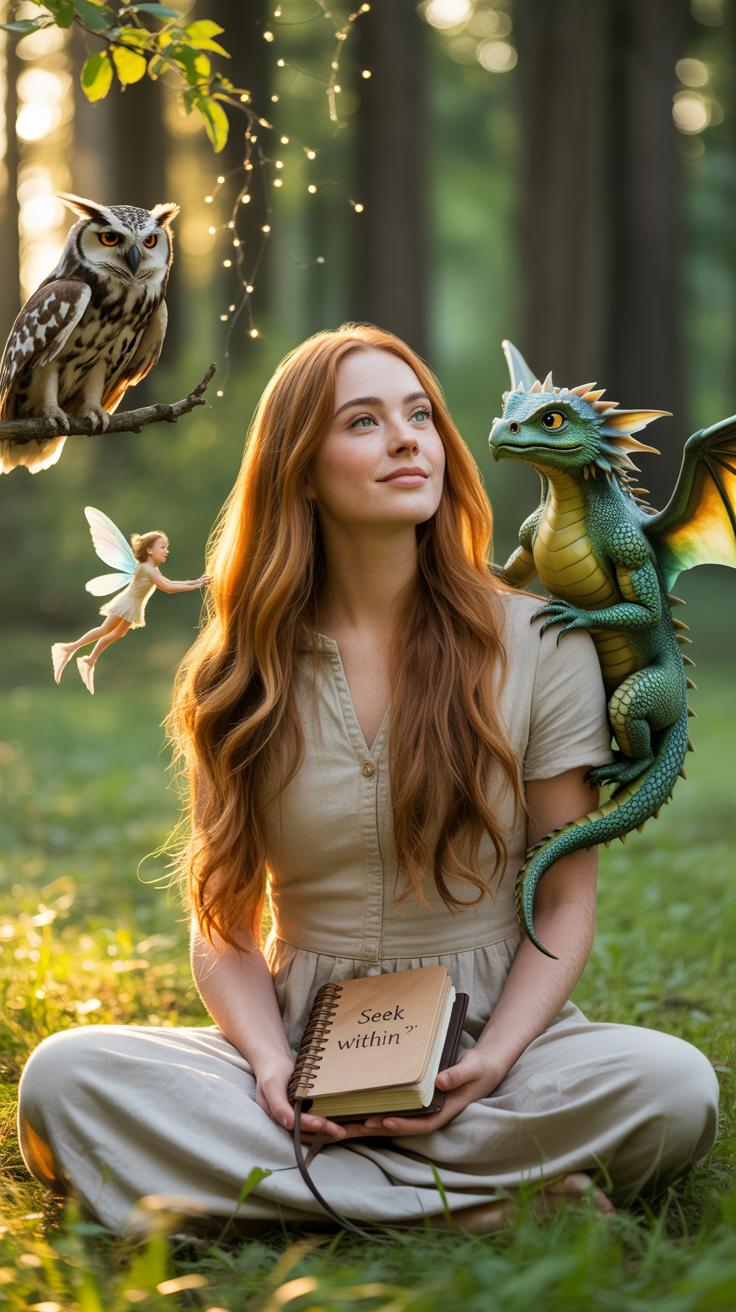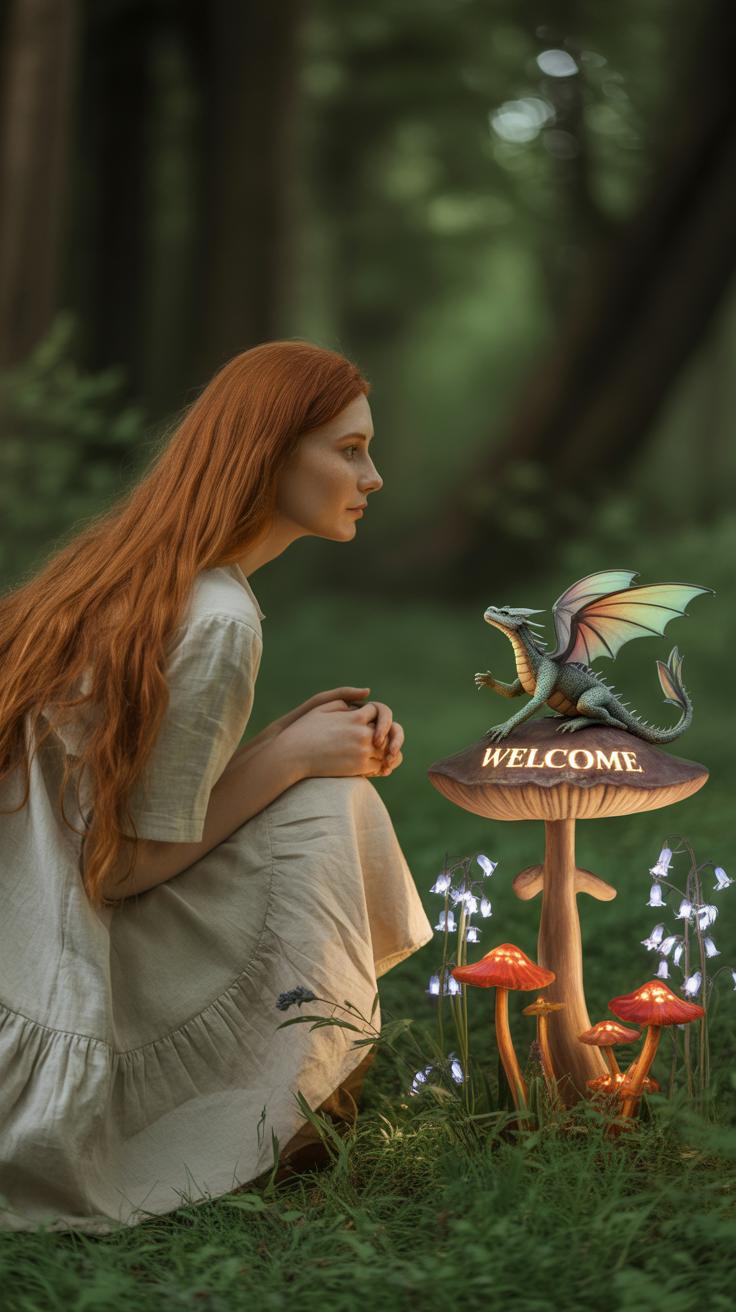Introduction
Magical creatures have fascinated people for centuries. These beings, often drawn from myths, stories, and folklore, hold a special place in many cultures. They come in many shapes and sizes, each with its own story and meaning. Understanding magical creatures can open your mind to a world of wonder just beyond what we see every day.
In this article, you will learn about different kinds of magical creatures and how they connect to our lives. We’ll explore why these creatures matter and what lessons they can teach us. You will discover new ways to see the world and your place in it through the eyes of these magical beings.
Understanding Magical Creatures and Their Origins
Magical creatures are beings that exist beyond the natural laws as we know them. They often possess qualities or powers that normal animals don’t have—think of a phoenix rising from ashes or a unicorn’s silent, glowing presence. But what exactly makes something magical? It’s not just about being unusual or rare. It’s about connection to something beyond everyday reality, a spark of the unknown or supernatural.
The idea of magical creatures has roots that stretch far back in human history. Many come from myths and folklore, born from the attempts of ancient people to explain the mysteries around them—death, nature, the stars. Stories passed down through generations brought these beings to life, each culture shaping them differently. For example, dragons can be fearsome beasts in one tradition and wise protectors in another.
What Makes a Creature Magical
Magical creatures often share common features that set them apart:
- Abilities beyond natural limits, like shape-shifting or controlling elements.
- Connection to spiritual or mystical forces rather than physical ones.
- Unusual appearances—horns, wings, or glowing eyes—that hint at something otherworldly.
- Roles in stories or myths that link them to moral lessons or cosmic balance.
These traits create a sense of wonder or awe, making the creatures feel alive in the imagination. They aren’t just animals with quirks; their very nature challenges how we understand life and the world.
Common Sources of Magical Creatures
Where do these creatures mostly come from? Much of what we know stems from:
- Mythology: Ancient gods, heroes, and beasts from Greek, Norse, Egyptian, and other mythologies offer rich catalogs of magical beings.
- Folklore: Local legends and tales often feature creatures tied to specific places or customs, like banshees or will-o’-the-wisps.
- Literature: Writers have expanded the range by inventing new magical beings or reimagining old ones, as seen in classic fairy tales and modern fantasy novels.
Sometimes these sources overlap, influencing each other in curious ways. Can a creature be both a myth and folklore? It depends on who you ask—and perhaps on what story you’re hearing.
Famous Magical Creatures and Their Stories
Creatures from European Folklore
Dragons occupy a huge place in European stories. Often seen as powerful beasts guarding treasures or ancient secrets, they can be fierce or wise, depending on the tale. For example, the Welsh legend of the red dragon symbolizes strength and resilience, but in some medieval stories, dragons represent chaos or evil to be overcome.
Fairies, on the other hand, are more elusive. They might be mischievous or helpful, sometimes both at once. English and Irish folklore often shows fairies living in a parallel world, influencing human lives in subtle ways. Many tales warn about offending them—perhaps a caution against disrespecting nature or the unknown.
Centaurs blend the human and animal worlds, embodying a tension between reason and instinct. In Greek mythology, they’re both wild and wise. Chiron, a centaur, teaches heroes, while other centaurs behave violently. This duality still fascinates people today, reflecting inner human struggles.
Creatures from Other Cultures
The Chupacabra, from Latin American stories, is less familiar in Europe but quite haunting. It’s often described as a creature that attacks livestock, especially goats, leaving mysterious marks. Some say it’s a monster born from fear of the unknown, while others think it might be an exaggerated explanation for real animal attacks. Either way, it captures a sense of unease about what lurks outside the familiar.
The Caipora of Brazilian folklore is another intriguing example. This forest spirit supposedly protects animals and punishes hunters who disrespect nature. Its role feels very practical—as if folklore is reminding people to care for the environment, wrapped in a magical figure that inspires awe and caution. The Caipora’s story might make you think about balance and respect in your own life.
It’s interesting to notice how these creatures often serve as mirrors—reflecting human fears, hopes, or values. Do you think the stories shape how you see the world or the unknown parts of life? Sometimes, these creatures influence us more than we realize.
Magical Creatures in Popular Media
Magical Creatures in Literature
Writers often bring magical creatures into their stories to add layers of meaning and wonder. These beings aren’t just there for spectacle; they carry messages—about fear, hope, or even parts of ourselves that we struggle to understand. Take the Harry Potter books, for example. J.K. Rowling doesn’t only use magical creatures to fill her world; each one reflects something deeper. The phoenix shows rebirth and resilience, while the Hungarian Horntail symbolizes challenge and danger.
Sometimes, magical creatures serve as mirrors of society’s prejudices or values, prompting readers to think beyond the surface. They become a way to question what’s normal or to highlight struggles like acceptance and identity. You might notice how familiar themes appear repeatedly, but with creatures standing in, allowing readers to approach tough topics differently.
Magical Creatures in Movies and Games
Movies and games let us experience magical creatures in ways books can’t fully capture. Visual effects bring dragons, unicorns, and centaurs to life, making their presence feel immediate and real—or at least close enough. In the Harry Potter films, creatures like Dobby and Buckbeak are more than just background details; they shape emotions and tension on screen.
Games add another layer by letting you interact with these beings. Whether it’s taming a hippogriff or battling a basilisk, you step into a world where magic feels tangible. This interaction makes the experience more personal—you’re not just observing magic but participating in it. In that sense, magical creatures become a tool for immersion, pulling you deeper into storytelling and sometimes even making you reflect on your own reactions to the fantastic.
The Role of Magical Creatures in Nature and Culture
Magical creatures often carry meanings that go beyond their fanciful shapes and abilities. Many represent natural forces—like storms, rivers, or forests—or embody cultural values essential to the societies where they originated. Take the dragon, for example. In some cultures, it’s a fierce guardian of treasure or wisdom, linked closely to fire and power. In others, dragons might symbolize balance or good fortune.
These creatures aren’t just random inventions; they are mirrors reflecting what people respect, fear, or aspire to. Think about creatures tied to the earth or sky—they often symbolize stability or freedom. Sometimes the same creature means very different things depending on where you look. That ambiguity actually invites you to explore what matters most in your own life.
Symbolism of Magical Creatures
Almost every magical being relates to a set of ideas or emotions. Some symbolize strength, others wisdom or protection. The phoenix, for instance, often stands for rebirth and renewal, living through endings and new beginnings. Meanwhile, the unicorn is usually a symbol of purity and grace, but sometimes also elusiveness.
These symbols don’t just decorate stories. They can impact how you see yourself or the world. Maybe seeing a gryphon reminds you to stand guard over what’s important—or signals you to trust your instincts. I’ve always found it a little strange how these symbols can shift meaning depending on who’s telling the story or how you feel at the moment.
Cultural Traditions and Magic
Magical creatures appear in rituals and customs around the globe—sometimes as protectors, other times as guides between worlds. The Chinese dragon, for example, is central to many festivals, symbolizing power and good luck. In Celtic traditions, creatures like faeries integrate into ceremonies that mark seasons or life milestones.
These creatures often play roles that blend the practical with the mystical. They strengthen communal bonds or explain the unexplainable. When you consider their place in culture, you see how magic isn’t just entertainment; it connects people to shared memories and values, bridging past and present. Could your own experiences with such creatures be part of a bigger cultural story?
How Magical Creatures Teach Us Life Lessons
Lessons from Brave Creatures
Many magical creatures show bravery in ways that feel surprisingly real. Take the griffin, for example—a creature that combines the strength of a lion with the sharp vision of an eagle. It confronts threats head-on, reminding us that courage isn’t about the absence of fear but moving forward despite it.
Or consider dragons, often misunderstood as merely fierce, but in many stories, they protect what matters most to them. That kind of courage nudges us to think about what we’re willing to stand up for in our own lives, even if it’s uncomfortable or risky.
It’s interesting, though; bravery in these creatures is rarely flawless. Sometimes they retreat, hesitate, or struggle. That makes their lessons feel more relatable—courage isn’t a perfect streak of bold acts but a series of imperfect choices.
Lessons about Caring and Respect
On the other side, creatures like the phoenix or the unicorn often embody qualities of kindness and respect. The phoenix’s cycle of rebirth can remind us that kindness sometimes means giving others a fresh start or being patient with their growth. It’s not always easy to forgive or care for someone difficult, but these creatures show us the value in trying.
Unicorns, tied closely to purity and gentleness, can teach respect—not just between people but for the natural world and ourselves. In some tales, they only allow those who are kind of heart to approach. It’s a quiet sort of lesson about the impact of respect and gentleness in everyday life.
What I find compelling is that these creatures don’t preach kindness—they demonstrate it in subtle ways. They remind us, perhaps, that caring isn’t about grand gestures but about consistent attentiveness and humility.
How to Spot Signs of Magical Creatures Around You
Noticing signs of magical creatures in everyday life isn’t always straightforward, but it’s possible once you start paying attention. You don’t have to live in a forest or dream of unicorns to spot subtle hints—they’re often woven into the natural world around you.
Natural Signs to Observe
Look closely at animals and plants. A sudden gathering of birds nearby, especially at dawn or dusk, might mean something mystical is near. Sometimes a particular animal will cross your path repeatedly—it could be a fox, a raven, or even a deer. Each one might symbolize a different creature or spirit watching over you.
Plants, too, can offer clues. Notice if mushrooms pop up in odd places or if there’s an unusual moss growth on a tree. These might mark a creature’s hidden territory. Weather changes can also hint at magic—an unexpected mist, a soft breeze that seems to whisper, or a sudden quiet in the air may signal their presence. Sometimes, it’s the absence of sound rather than a strange noise that feels… different.
Dreams and Imagination
Your dreams can be windows into worlds where magical creatures roam. Pay attention when animals or mythical beings appear in your dreams—they might be trying to communicate. Even daydreams or sudden flashes of inspiration could hint at a connection you haven’t fully grasped. Don’t rush this—it’s often subtle, maybe a fleeting image or feeling that lingers longer than usual after waking.
Creativity acts as a bridge, too. Sketching, writing, or imagining stories about magical beings may uncover personal connections. Sometimes, it’s not about what you see but what you feel during these moments—a little tug on your senses, a sense of wonder or curiosity that you can’t quite explain.
Bringing Magic into Your Life with Magical Creatures
Including magical creatures in your daily routine can feel surprisingly natural, even if you don’t live in a storybook. For example, decorating your space with small statuettes or prints of dragons, unicorns, or faeries can subtly shift the atmosphere. Sometimes these objects become little reminders of wonder rather than just decoration.
Stories play a role too. Whether you read aloud to a child, share a favorite tale with friends, or quietly revisit a book yourself, magical creatures come alive through words. These stories offer not only entertainment but also a way to reflect on qualities like courage or kindness, often symbolized by these beings.
If you enjoy hands-on activities, try drawing or crafting your own creatures. You don’t need to be an artist. Sketching a griffin or folding a paper phoenix can be calming, even if the result looks rough. Writing short stories about your invented creatures can reveal unexpected sides of your imagination. The process can be as enriching as the product.
Could playing with magical creatures this way change how you see everyday moments? Perhaps it adds a bit of curiosity or patience, which is something many of us could use more of.
Magical Creatures in History and Their Impact on Beliefs
Historical Beliefs About Magical Creatures
People have long believed in magical creatures, shaping their world and choices in surprising ways. Take dragons, for example. In medieval Europe, they weren’t just stories but symbols of danger and power. People would avoid certain places, thinking dragons guarded treasure or punished those who trespassed. On the other hand, in some Asian cultures, dragons represented wisdom and strength, inspiring rulers to connect themselves with these creatures for legitimacy.
Then there’s the belief in fairies or spirits that influenced daily life. Farmers might leave offerings to keep their crops safe or avoid areas thought to house mischievous beings. Some historical records show entire communities adjusting behaviors based on these beliefs, which could mean the difference between peace or conflict within villages.
What strikes me is how these creatures weren’t just for entertainment. They often explained natural phenomena or human experiences that people couldn’t yet understand. In a way, magical creatures were part of survival strategies or social order.
Changing Views Over Time
As knowledge grew, attitudes toward magical creatures shifted—sometimes quite drastically. The Renaissance and scientific advances led many to question whether these beings really existed. Yet, even with skepticism, tales persisted. Some creatures moved from feared to friendly figures, like unicorns evolving into symbols of purity in art rather than something to hunt.
You might notice that today, magical creatures mostly belong to fiction and fantasy, yet the curiosity about them hasn’t vanished. Our fascination transformed into enjoyment rather than fear or strict belief. Still, some ideas are oddly resilient. For instance, the Loch Ness Monster continues to captivate people, blending myth with the hope of discovery—showing that sometimes, fact and folklore blur in unexpected ways.
Have you ever wondered why, even with so much information, you might find yourself captivated by these old stories? Maybe it’s because they tap into something deep within us—a mix of wonder, caution, and the unknown.
Magical Creatures and Personal Growth
Thinking about magical creatures might seem like a simple fantasy exercise, but it can actually reveal quite a bit about who you are. These creatures often stand for parts of our inner world—mixing qualities we recognize in ourselves and feelings that are harder to name. For example, a phoenix might symbolize your resilience, rising again after setbacks. Or maybe a mermaid represents a part of you that feels caught between two different worlds or identities. It’s not always straightforward. Sometimes the creature you identify with might feel contradictory, confusing even, like a dragon that’s both fierce and protective.
When you use these creatures as mirrors, you give yourself permission to explore your emotions and traits in a new way. Writing about them, or keeping them in mind during meditation, can open doors. Imagine journaling about a griffin and noticing how it stirs thoughts about courage mixed with a need for control. What does that mean for your everyday life? Or during quiet moments, ask yourself how a unicorn’s innocence might connect with your own hopes or fears about being vulnerable. These reflections don’t provide neat answers but push you into new understanding, nudging you a bit closer to yourself.
Here are some simple ways you might start:
–
Pick a creature that calls to you, even if you don’t fully understand why.
–
Write a few sentences about times when you felt like that creature or disagreed with its qualities.
–
Meditate while visualizing the creature, noticing what emotions come up, no matter how small or strange.
With practice, this approach can make your self-exploration feel less like a chore and more like a story unfolding, one with unexpected turns.
Exploring Magical Creatures Safely and Respectfully
When you step into the world of magical creatures, it’s easy to get carried away by curiosity. But it’s just as easy to forget the delicate balance between wonder and respect. For instance, if you visit forests tied to legends or home to rumored mystical beings, try to tread lightly—both on the ground and with your words.
Here are some ways to keep your explorations thoughtful:
- Always observe rather than interfere. If you imagine a faerie circle, don’t disturb the plants around it. Nature and myth often intertwine too closely to separate.
- Listen to local traditions. Different cultures tell different stories about creatures. Understanding how those stories matter to people can prevent accidental disrespect.
- Use your own experiences carefully when sharing. It’s tempting to tell wild tales, but sometimes it’s wise to ask permission before recounting someone else’s story or customs.
Also, don’t rush to label everything you encounter. Part of appreciating magical creatures is allowing a bit of mystery to linger. After all, the unknown often fuels fascination.
Talking to others about your interest can feel tricky. I once hesitated telling a friend about a nymph sighting because I wasn’t sure she’d be open. Maybe start with questions—ask if they know stories from their area. Sharing with respect creates space for dialogue rather than disbelief.
After all, exploration with care doesn’t mean losing your spark of imagination. It means letting that spark grow in a way that honors both the land and its stories.
Conclusions
Magical creatures teach us about bravery, kindness, and respect for nature. They remind us that the world is full of mysteries waiting to be explored. By learning about these creatures, you become part of a long tradition of storytelling and imagination that brings people together.
Next time you think about magical creatures, remember how they connect to your feelings, beliefs, and experiences. Use what you have learned to see life with fresh eyes and a hopeful heart. Magical creatures are more than stories—they are guides and friends in your life journey.

